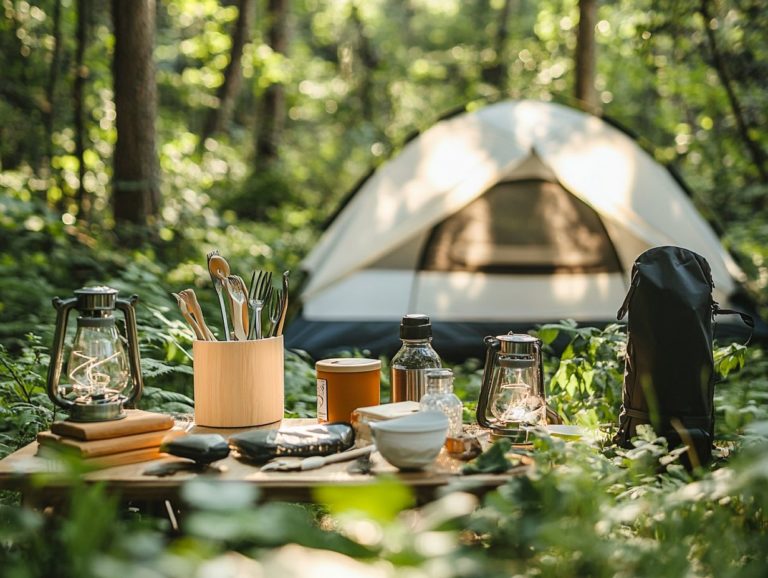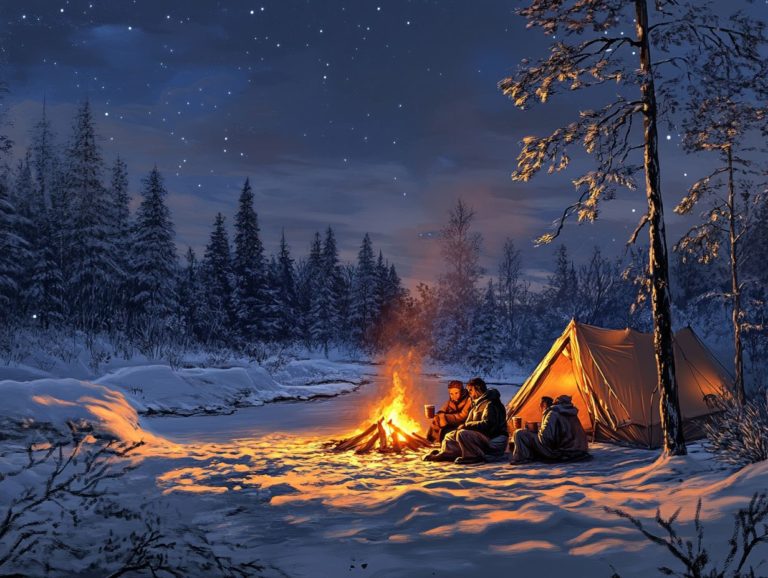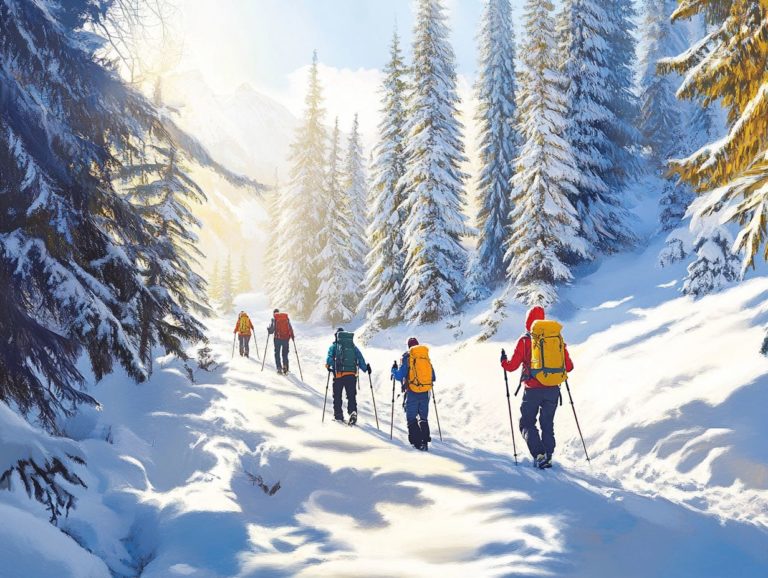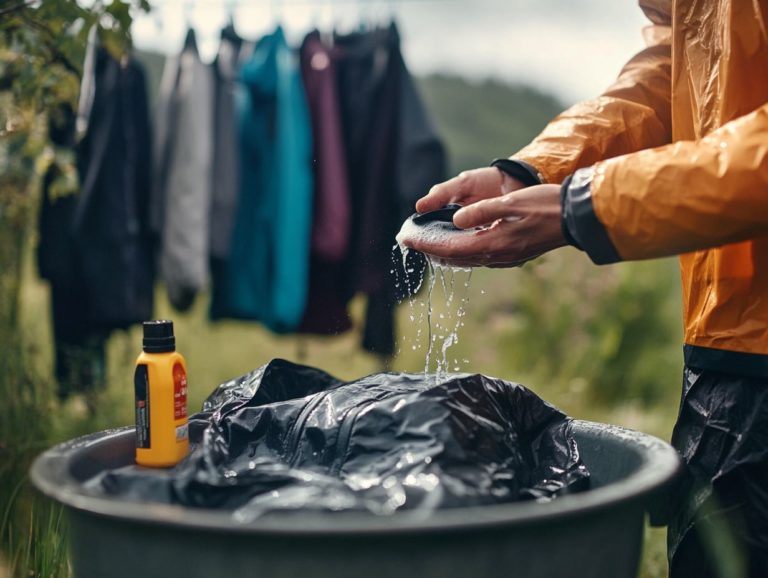How to Maintain Hiking Gear?
Maintaining your hiking gear is essential for ensuring your safety, comfort, and the longevity of your equipment on the trails.
From cleaning and drying your gear to mastering proper storage techniques, every detail contributes significantly to preserving your gear’s performance.
Explore best practices for keeping everything in prime condition, learn how to recognize when it’s time to repair or replace items, and utilize a handy maintenance checklist to keep you organized.
Whether you re an experienced hiker or just starting to embrace the great outdoors, this guide will get you ready for your next adventure!
Contents
Key Takeaways:
- Proper maintenance of hiking gear is essential for safety and longevity.
- Clean and dry your gear properly after each use to prevent damage and mold growth.
- Regularly inspect and repair or replace gear as needed to ensure functionality on the trail.
The Importance of Proper Maintenance
Proper maintenance of your hiking and outdoor gear is essential for ensuring longevity and optimal performance during your adventures.
When you neglect the care of items like tents, hiking boots, sleeping bags, and inflatable pads, you invite issues that can compromise functionality and even pose hazards.
By using the right cleaning, storing, waterproofing, and repair methods, you not only extend the lifespan of your equipment but also minimize the environmental impact that comes with frequent gear replacements.
Adhering to these maintenance best practices allows you to contribute to sustainable travel and fully embrace the joys of the great outdoors.
Cleaning and Drying Hiking Gear
Cleaning and drying your hiking gear effectively is essential for maintaining its functionality and appearance, ensuring your equipment performs at its best on every adventure.
Using high-quality cleaning products like Nikwax Tech Wash helps you effortlessly remove dirt and odors while preserving the integrity of your sleeping bags, tents, and hiking boots.
Proper drying techniques also help prevent mold and mildew, significantly extending the lifespan of your outdoor gear and enhancing your overall comfort during outdoor activities.
Best Practices for Cleaning and Drying
Implementing best practices for cleaning and drying requires a keen understanding of each item’s specific needs.
Regularly cleaning your gear not only banishes dirt and odors but also allows you to reapply durable water repellents, which help keep water off your gear.
For instance, after your trip, it’s essential to air out your tent and spot-clean any stains with gentle soap, avoiding fabric softeners that can compromise the materials.
When washing sleeping bags, opt for front-loading machines to preserve their insulation.
Your hiking boots will benefit from a thorough scrub of the outsole and a careful rinse of the upper.
Timing is crucial; clean your gear after each use or before long-term storage to prevent moisture or residue from becoming a breeding ground for mold or mildew.
By incorporating these methods into your routine, your gear will be better equipped to endure the rigors of the trail, maximizing both performance and longevity.
Storage Tips for Hiking Gear
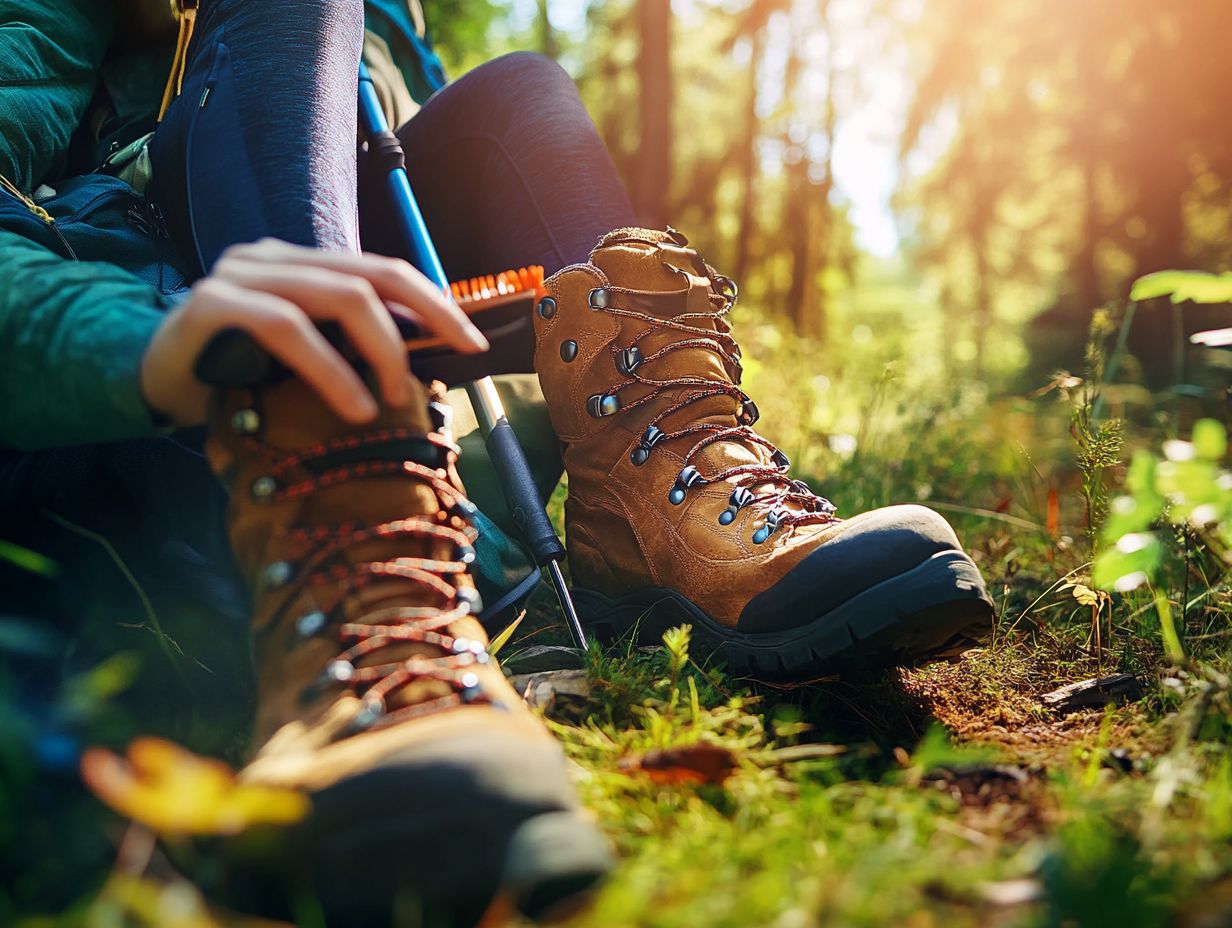
Properly storing your hiking gear is crucial for maintaining its integrity and ensuring it’s always ready for your next outdoor adventure.
Consider utilizing a dedicated gear closet to keep everything organized while safeguarding your equipment from dirt, moisture, and pesky critters.
Items like tents, sleeping bags, and inflatable pads should be housed in a clean, dry environment preferably in breathable bags.
This practice not only prolongs their lifespan but also ensures they remain fully functional for your future excursions.
Ready to hit the trails with confidence? Start maintaining your gear today!
Proper Storage to Prolong Lifespan
To extend the lifespan of your hiking gear, it’s important to use proper storage techniques. Stowing away items like tents, sleeping bags, and hiking boots in a cool, dry place prevents damage from moisture and pests. This ensures they perform at their best when you hit the trails.
Regularly checking for wear and tear helps you catch any issues early, allowing your gear to remain in optimal condition.
Consider storing smaller items like cooking gear and first-aid kits in designated bins for easy access. Keeping your gear organized not only helps avoid clutter but also reduces the chances of misplacing essential items before your next trip.
For example, making sure your tents are completely dried before packing them away is vital to preventing mold growth. Routine check-ups help you spot potential problems, such as frayed straps or damaged zippers, allowing you to tackle them before your next adventure.
When you build good storage habits, you’re setting yourself up for action-packed adventures!
Repairing and Replacing Hiking Gear
Repairing and replacing hiking gear is crucial for outdoor maintenance. It guarantees your equipment remains safe and effective. Understanding when to repair versus when to replace can save you both money and resources, aligning with sustainable travel practices.
Simple solutions, like using patch kits for sleeping bags and tents or applying zipper lubricant, can significantly extend the lifespan of your gear. This paves the way for countless more adventures ahead.
Time for a Gear Check-Up? Here’s How to Decide!
Determining when to repair or replace your outdoor gear is essential for effective and sustainable maintenance. Minor issues, like small tears in tents or sleeping bags, can often be patched up with a simple kit. In contrast, significant damage might require a full replacement to ensure your safety and the gear s functionality.
When assessing your gear, look for specific indicators that will guide your decision-making process. For instance, a frayed strap on your backpack might just need a little sewing. However, severe structural damage could compromise the entire bag’s integrity, calling for a replacement.
Similarly, scuffed hiking boots can often benefit from resoling, which means replacing the sole of your boots, as long as the upper material is still intact. A cracked sole, however, is usually a clear sign that it s time to invest in a new pair.
By carefully evaluating these signs of wear across your gear, you can discern when a repair is a viable solution and when it s wiser and safer to opt for new gear.
Essential Hiking Gear Maintenance Checklist
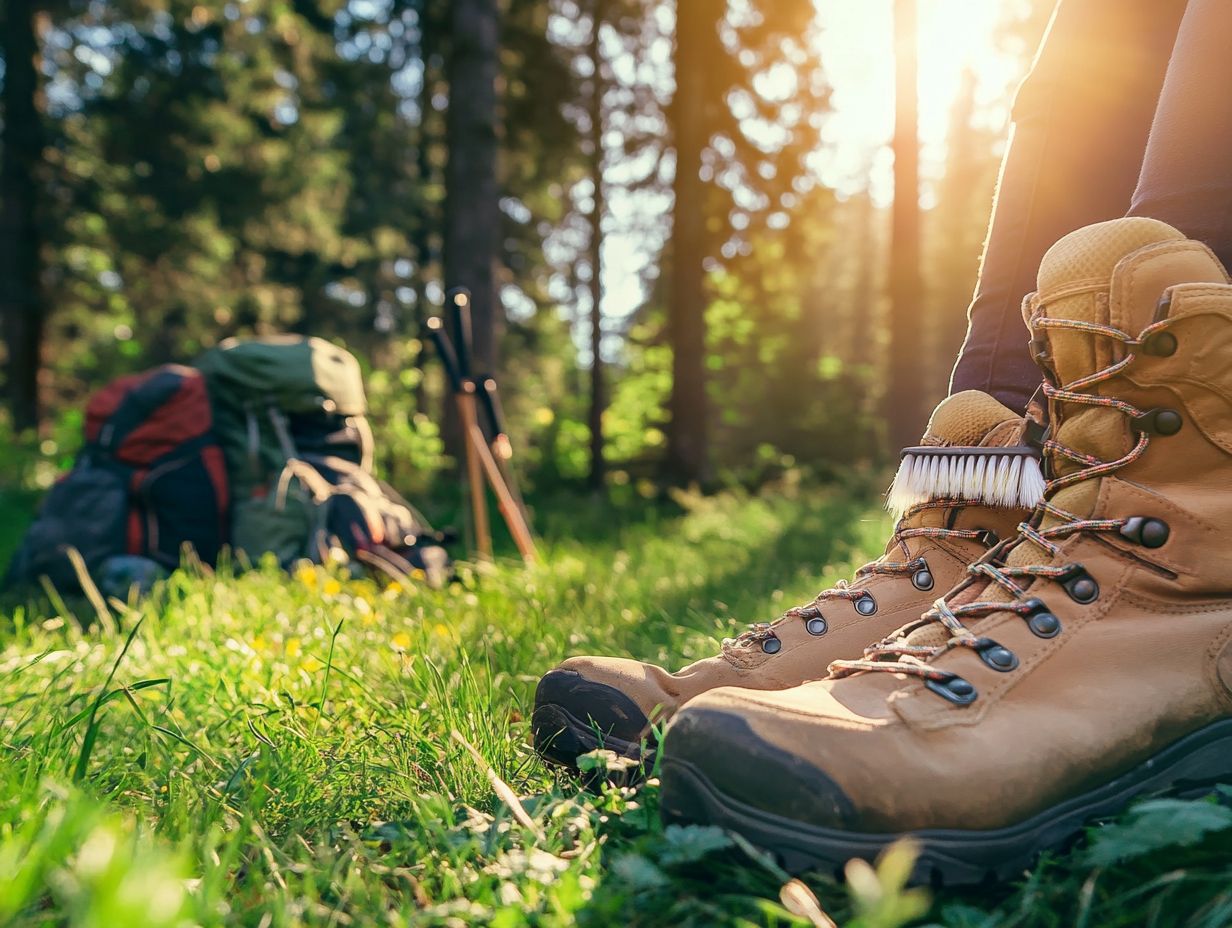
A comprehensive hiking gear maintenance checklist is crucial for ensuring your outdoor equipment is in optimal condition before embarking on any adventure. This checklist should include cleaning your gear, inspecting for any damage, and making sure you have all necessary items, such as a first aid kit.
By regularly reviewing this checklist, you can sidestep last-minute surprises and ensure a safe, enjoyable outdoor experience.
Key Items to Regularly Inspect and Maintain
Regularly inspecting and maintaining key items in your hiking gear is essential for ensuring reliability and safety in the wilderness.
Pay attention to the tread on your hiking boots. Look for uneven wear or loose parts that could compromise your traction. For inflatable pads, check for leaks by inflating them and applying soapy water to spot any bubbles.
Your tent deserves a thorough examination as well. Look for tears in the fabric and damage to zippers. Ensure that the waterproofing is intact by treating it with appropriate sealants if necessary.
Don t overlook your cleaning gear, like brushes and microfiber cloths. Make sure they re free from mold or debris, as these can hinder their performance.
A solid maintenance routine not only prolongs the lifespan of your equipment but also significantly enhances your comfort and security during your adventures.
Frequently Asked Questions
How to Maintain Hiking Gear?
Maintaining your hiking gear is essential for a safe and enjoyable outdoor experience. Here are some common questions about keeping your gear in top shape.
Why is it important to maintain hiking gear?
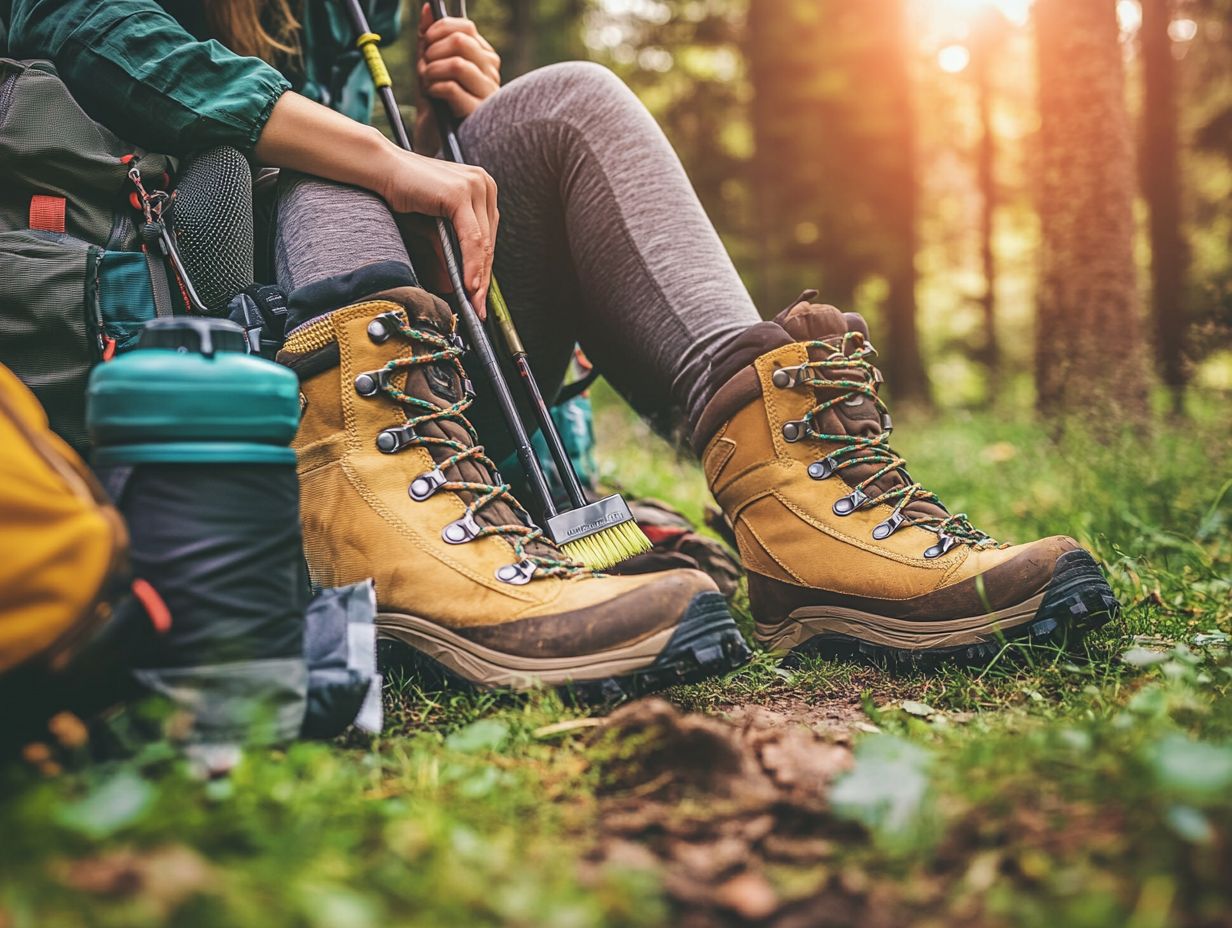
Your gear needs proper care to perform well on hikes. This also extends its lifespan and saves you money over time.
What should I do before storing my hiking gear?
Clean and dry your gear thoroughly before storing it. This prevents mold, mildew, and rust on metal parts.
How often should I clean my hiking gear?
Clean your gear after every use, especially after muddy or wet hikes. If your gear hasn t been used in a while, give it a thorough clean before your next outing.
What is the best way to clean hiking gear?
Follow the manufacturer’s instructions for cleaning. Usually, a mild soap and warm water suffice.
Waterproofing is crucial, especially for items like rain jackets and tents. For delicate items like down jackets, use a special detergent designed for them.
How should I store my hiking gear?
Store your gear in a dry, well-ventilated area. Avoid damp places to prevent mold and mildew growth.
Can I repair my hiking gear instead of buying new?
Yes, many items can be repaired with patch kits for things like torn tent fabric or broken zippers. Using zipper lubricant can also help maintain your gear.
If the cost of repairs approaches that of new gear, consider investing in high-quality items like durable water-repellent tents or hiking boots from trusted brands.

